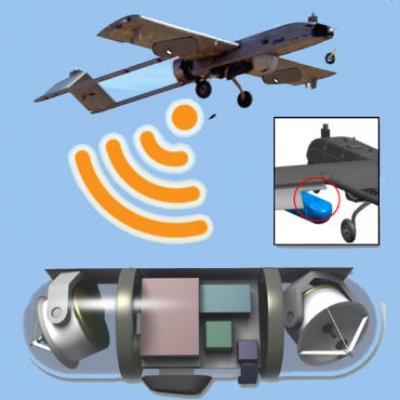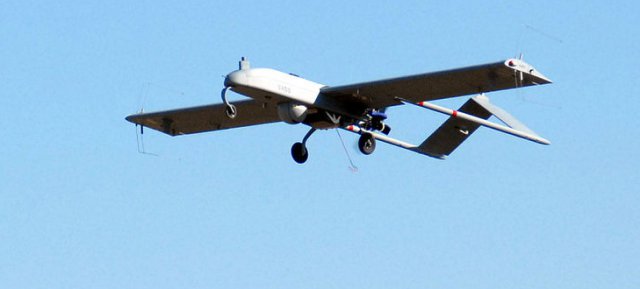The Defense Advanced Research Projects Agency is a step closer to perfecting the repurposing of aging surveillance UAS into high-bandwidth mobile hotspots designed to ensure warfighters have aerial Wi-Fi access in the most remote places on Earth.
The agency is outfitting retired SRQ-7 Shadow UAS that once gleaned information for the Army above the Middle East with lightweight pods that contain the technology necessary to provide soldiers with a gigabit-per-second connection to forward-operating bases, operations centers and fix communications centers through what DARPA calls a millimeter-wave backbone network.
 All told, the pod is eight inches wide and about 20 pounds – its small stature is important given that RQ-7 Shadows weigh less than 200 pounds – yet in announcing the completion the first phase of the three-phase Mobile Hotspots programme, DARPA said it has achieved millimeter-wave amplification capabilities sufficient to provide high-capacity connectivity at distances greater than 50 kilometers.
All told, the pod is eight inches wide and about 20 pounds – its small stature is important given that RQ-7 Shadows weigh less than 200 pounds – yet in announcing the completion the first phase of the three-phase Mobile Hotspots programme, DARPA said it has achieved millimeter-wave amplification capabilities sufficient to provide high-capacity connectivity at distances greater than 50 kilometers.
“We’re pleased with the technical achievements we’ve seen so far in steerable millimeter-wave antennas and millimeter-wave amplifier technology,” said Dick Ridgway, DARPA programme manager, said in a statement. “These successes — and the novel networking approaches needed to maintain these high-capacity links — are key to providing forward deployed units with the same high-capacity connectivity we all enjoy over our 4G cellphone networks.”
In its announcement, DARPA signaled it had developed “mobile ad-hoc networking approaches” to maintain the high-capacity backhaul network on mobile air and ground platforms, utilizing “unique solutions” to overcome challenges warfighters would face in connectivity, topology or terrain.
DARPA began work on the programme’s second phase in March, and aims to integrate its phase-one technologies into “Shadow-compatible aerial pods and ground vehicles,” culminating with a demonstration of “at least four Shadow-compatible pods, two ground vehicles and a fixed ground node.”
A third phase would see DARPA field test Mobile Hotspot systems on networks of multiple drones and mobile ground vehicles.
Source: Defense One

